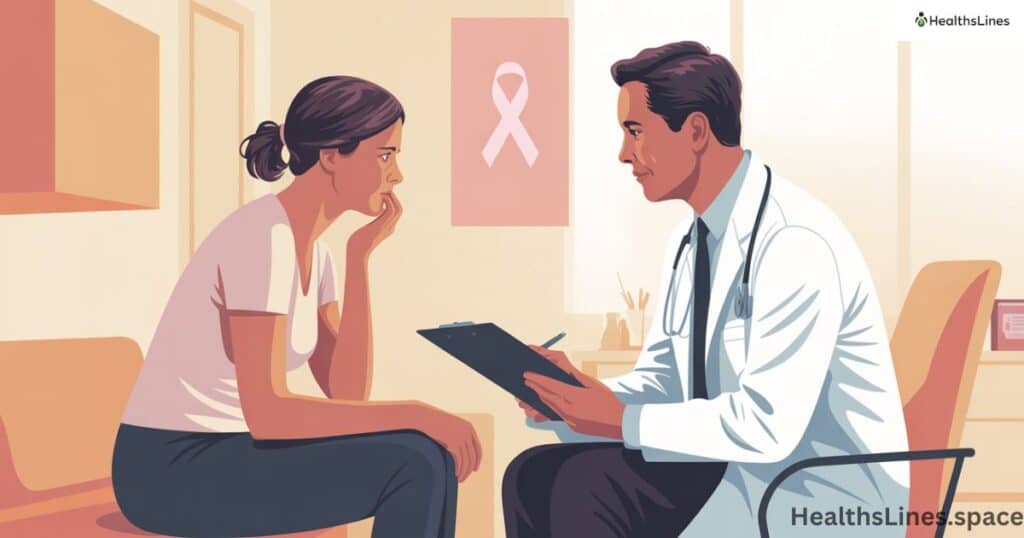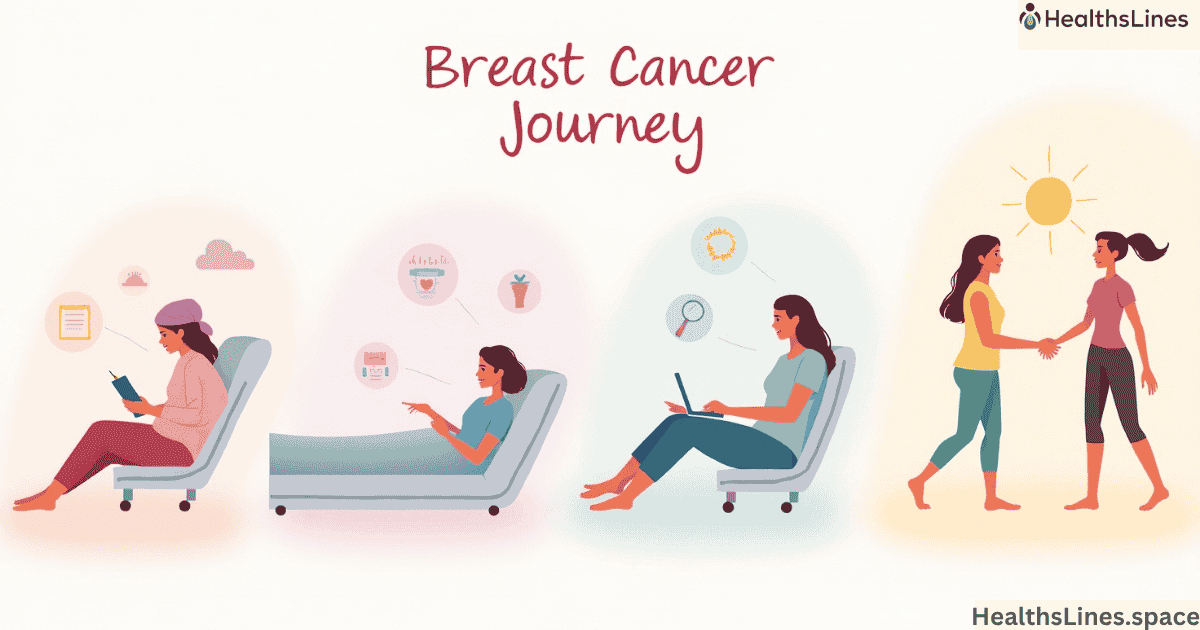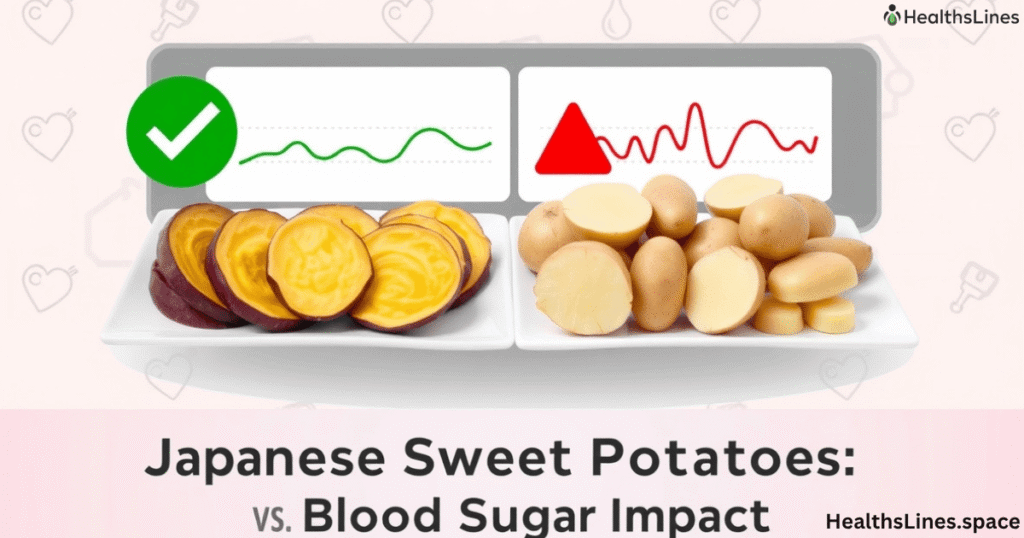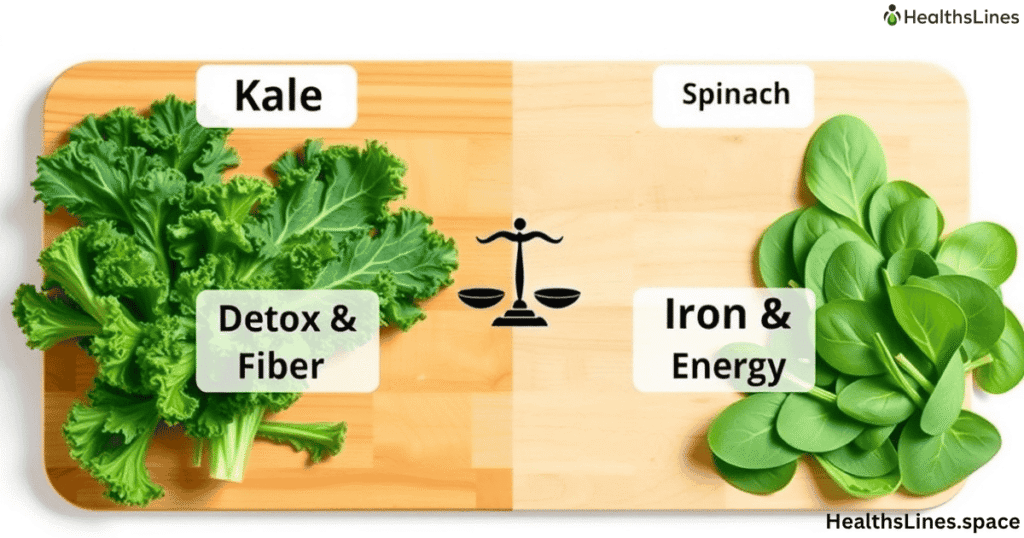Breast cancer is one of the most common cancers in women worldwide. Knowing how it is staged can help you better understand your diagnosis, make informed treatment decisions, and know what to expect. This blog will explain the five stages of breast cancer in simple words. We’ll cover the TNM staging, biomarkers, prognosis, and different types of treatments available for each stage.
Staging breast cancer is more than just a number. It involves understanding how far the disease has spread, how aggressive it is, and how it may respond to treatment. The stage helps doctors choose the best plan to manage your breast cancer and improve your chances of recovery.
What Is Breast Cancer Staging
Doctors use stage of breast cancer to describe how big the cancer is and where it has spread. They use something called the TNM system, which stands for:
- T: Tumor size
- N: Lymph node involvement
- M: Metastasis (whether it has spread to other parts of the body)
These three pieces of information come together to give a stage number from 0 to 4. The higher the number, the more advanced the cancer. Doctors often find this out through diagnostic tests like a biopsy, MRI, ultrasound, or CT scan. The final stage can be determined before surgery (clinical stage) or after surgery (pathologic stage).
This system also includes other details like hormone receptor status (ER or PR) and HER2 status. These are types of biomarkers that help doctors understand how the cancer might behave. Another factor is the grade of the cancer, which tells how fast the cells are growing. Tests like Oncotype DX help predict if the cancer will come back.
How Doctors Determine the Cancer Stage

Doctors use the TNM system to assign a stage. They measure the tumor’s size, check if it has reached nearby lymph nodes, and see if it has spread beyond the breast and lymph nodes. Other tests help check for metastatic breast cancer. Imaging tools and biopsies are key parts of staging.
Once all the information is collected, doctors place the cancer in a stage from 0 to 4. Some stages have subcategories like 1A and 1B, or 3A, 3B, and 3C. These small changes can mean big differences in treatment and outlook. Understanding your exact stage helps your care team plan the right path.
Here’s a quick reference table to understand the stages better:
| Stage | Tumor Size | Lymph Nodes | Metastasis |
| Stage 0 | None (non-invasive) | None | No |
| Stage 1A | ≤ 2 cm | None | No |
| Stage 1B | None/very small | Small areas in nodes | No |
| Stage 2A | 2–5 cm | Small number | No |
| Stage 2B | >5 cm or more nodes | Yes | No |
| Stage 3A | Any size | More nodes | No |
| Stage 3B | Spread to chest wall/skin | Nodes involved | No |
| Stage 3C | Extensive node spread | Yes | No |
| Stage 4 | Any size | Any | Yes (other organs) |
Stage 0 Breast Cancer (DCIS)
In stages of breast cancer the Stage 0 breast cancer is also called DCIS (ductal carcinoma in situ), means the cancer is still in the milk ducts. It hasn’t spread to nearby tissue, so it’s considered non-invasive. Many people don’t feel any symptoms. It’s usually found during a routine mammogram.
Even though it’s the earliest form of breast cancer, DCIS can turn into invasive breast cancer if not treated. Treatment often includes surgery (lumpectomy or mastectomy) and sometimes radiation. Hormone therapy might be used if the tumor is hormone receptor positive.
Stage 1 Breast Cancer – Localized and Early
In stages of breast cancer, Stage 1 breast cancer means the tumor is small and hasn’t spread much. It’s divided into 1A and 1B. In stage 1A, the tumor is no larger than 2 cm and hasn’t spread to any lymph nodes. In stage 1B, doctors find tiny amounts of cancer in the lymph nodes, even though they may not see a tumor in the breast itself.
This stage has an excellent prognosis. Doctors usually recommend surgery, followed by radiation or hormonal therapy if the cancer is ER or PR positive. Some cases may also require chemotherapy, depending on HER2 status and other biomarkers.
Stage 2 Breast Cancer – Growing but Still Manageable
In stages of breast cancer, Stage 2 breast cancer means the tumor is growing or has spread to nearby lymph nodes. This stage is further split into 2A and 2B. Stage 2A usually involves a tumor between 2 and 5 cm or spread to 1–3 lymph nodes. Stage 2B includes a tumor larger than 5 cm or more significant lymph node involvement.
Doctors treat stage 2 with a mix of surgery, chemotherapy, radiation, and targeted therapy like HER2-directed drugs if needed. Many people respond well if the cancer is caught at early stage. Hormone receptor testing, Oncotype DX, and other tests help personalize the treatment plan.
Stage 3 Breast Cancer – Locally Advanced
In stages of breast cacner, Stage 3 breast cancer is considered locally advanced. It has not spread to distant organs but is more aggressive. It includes 3A, 3B, and 3C. In 3A, many lymph nodes are involved, or the tumor is large in size. Stage 3B means the cancer has spread to the chest wall or skin, often causing swelling or ulcers. Stage 3C includes cancer in 10 or more lymph nodes or nodes above the collarbone.
Treatments for stage 3 are more aggressive. They may start with neoadjuvant chemotherapy to shrink the tumor before surgery. Doctors follow this treatment with radiation, hormone therapy, or HER2-targeted therapy, depending on the biomarkers. Early diagnosis and a strong treatment plan can still lead to good results.
Stage 4 Breast Cancer – Metastatic and Advanced
Generally Stage 4 breast cancer is also known as metastatic breast cancer. At this stage, cancer has spread to distant parts of the body like the bones, lungs, liver, or brain. It doesn’t matter how big the tumor is—the presence of metastasis makes it stage 4.
While it is not curable, stage 4 can be managed for years. The goal is to improve quality of life and extend survival. Treatments may include chemotherapy, hormonal therapy, targeted therapy, and even immunotherapy. Management depends on symptoms, biomarker results, and overall health. People with HER2-positive or ER-positive tumors often live longer with the right therapies.
Prognosis and Survival Rates by Stage

Prognosis means the likely outcome or chance of recovery. It varies by stage and other factors like age, health, tumor biology, and treatment response. The SEER database gives a general view of 5-year survival rates.
| Stage | 5-Year Survival Rate |
| Stage 0 | Nearly 100% |
| Stage 1 | Around 99% |
| Stage 2 | 93%–96% |
| Stage 3 | 72%–86% |
| Stage 4 | About 30% |
Even with stage 4, many people live for several years thanks to modern treatments. Understanding your biomarkers, hormone receptor status, and HER2 levels can give a clearer picture of your outlook.
FAQs About Breast Cancer Staging
Yes, the stage can change after surgery or if new tests reveal more information. Doctors may adjust the treatment plan as they learn more. Regular follow-ups and scans are important to track the cancer’s progress. Re-staging might be needed if the cancer returns.
You should ask your doctor about the exact stage, what it means, and what the next steps are. Questions about biomarkers, treatment side effects, and expected prognosis can help you prepare for the journey ahead. Knowledge leads to empowerment.
Why Early Detection Changes Everything
Finding breast cancer early can make all the difference. Stage 0 to 2 cancers often respond well to treatment, with high survival rates and less invasive therapy. That’s why mammograms, regular checkups, and knowing your body are key.
If something feels off—like a lump, swelling, or skin changes—don’t wait. Early action saves lives. As treatments improve, so do chances of survival and living a full life after a breast cancer diagnosis.
Visual Summary and Additional Resources
Here’s a simple visual guide for all stages and their typical features:
| Stage | Main Feature | Common Treatment Options |
| 0 | DCIS | Surgery, radiation |
| 1 | Small, localized | Surgery, hormone therapy |
| 2 | Larger tumor or node spread | Surgery, chemo, radiation |
| 3 | Chest wall or many nodes | Chemo, surgery, radiation |
| 4 | Distant spread | Ongoing treatment, palliative care |
To learn more, visit trusted sources like BreastCancer.org and American Cancer Society. These sites offer free tools, patient stories, and medical guides.












